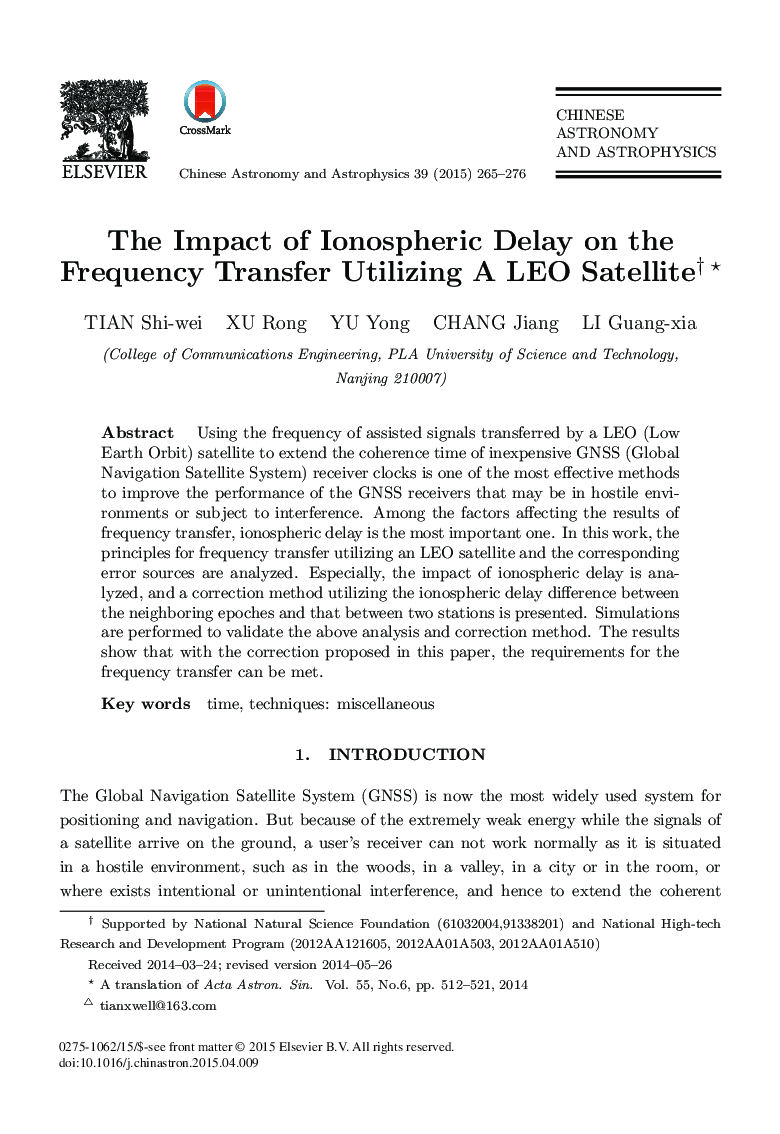| Article ID | Journal | Published Year | Pages | File Type |
|---|---|---|---|---|
| 1771797 | Chinese Astronomy and Astrophysics | 2015 | 12 Pages |
Using the frequency of assisted signals transferred by a LEO (Low Earth Orbit) satellite to extend the coherence time of inexpensive GNSS (Global Navigation Satellite System) receiver clocks is one of the most effective methods to improve the performance of the GNSS receivers that may be in hostile environments or subject to interference. Among the factors affecting the results of frequency transfer, ionospheric delay is the most important one. In this work, the principles for frequency transfer utilizing an LEO satellite and the corresponding error sources are analyzed. Especially, the impact of ionospheric delay is ana- lyzed, and a correction method utilizing the ionospheric delay difference between the neighboring epoches and that between two stations is presented. Simulations are performed to validate the above analysis and correction method. The results show that with the correction proposed in this paper, the requirements for the frequency transfer can be met.
